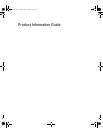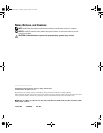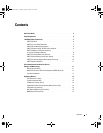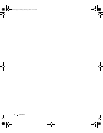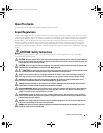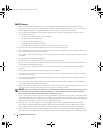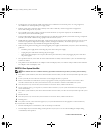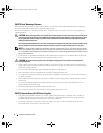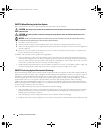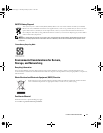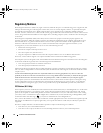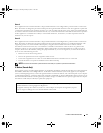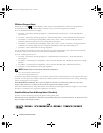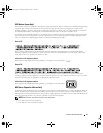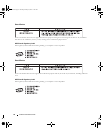
Product Information Guide 9
NOTE: While grounding techniques may vary, a positive connection to a safety (earth) ground is a requirement.
• Wire the unit with copper wire only, and unless otherwise specified, use 14 American Wire Gauge (AWG) wire, and protect
it with a 7.2-ampere (A) minimum to a 20-A maximum protective device or a 25-A maximum protective device when used
with 90ºC wire.
CAUTION: A qualified electrician must perform all connections to DC power and to safety grounds. All electrical wiring must
comply with applicable local or national codes and practices.
CAUTION: Before connecting safety ground or power cables to the connector, ensure that the power is removed from the DC
circuit. To ensure that the power is off, locate the circuit breaker on the DC source circuit (usually at the power distribution of
the battery distribution fuse bay). Switch the circuit breaker to the off position and, if available, install an approved safety
locking device on the circuit breaker or switch.
CAUTION: When stranded wiring is required, use approved wiring termination, such as closed-loop or spade-type with
upturned lugs. These terminations should be the appropriate size for the wires and must be double crimped, one on the
conductor and one on the insulation.
CAUTION: When installing the unit, the ground connection must always be made first and disconnected last to prevent an
energy hazard.
CAUTION: Never defeat the ground conductor or operate the equipment in the absence of a suitably installed ground
conductor. Contact the appropriate electrical inspection authority or an electrician if you are uncertain that suitable grounding
is available.
CAUTION: The system chassis must be securely grounded to the rack cabinet frame. Do not attempt to connect power to the
system until grounding cables are connected. Completed power and safety ground wiring must be inspected by a qualified
electrical inspector. An energy hazard will exist if the safety ground cable is omitted or disconnected.
SAFETY: Modems, Telecommunications, or Local Area Network Options
• If your system includes a modem, the cable used with the modem should be manufactured with a minimum wire size of
26 American wire gauge (AWG) and an FCC-compliant RJ-11 modular plug.
• Do not connect or use a modem during a lightning storm. There may be a risk of electrical shock from lightning.
• Never connect or use a modem in a wet environment.
• Do not plug a modem or telephone cable into the network interface controller (NIC) receptacle.
• Disconnect the modem cable before opening a product enclosure, touching or installing internal components, or touching
an uninsulated modem cable or jack.
SAFETY: Products With Laser Devices
• Do not open any panels, operate controls, make adjustments, or perform procedures on a laser device other than those
specified in the product's documentation.
• Only trained service technicians should repair laser devices.
book.book Page 9 Tuesday, January 9, 2007 11:43 AM



